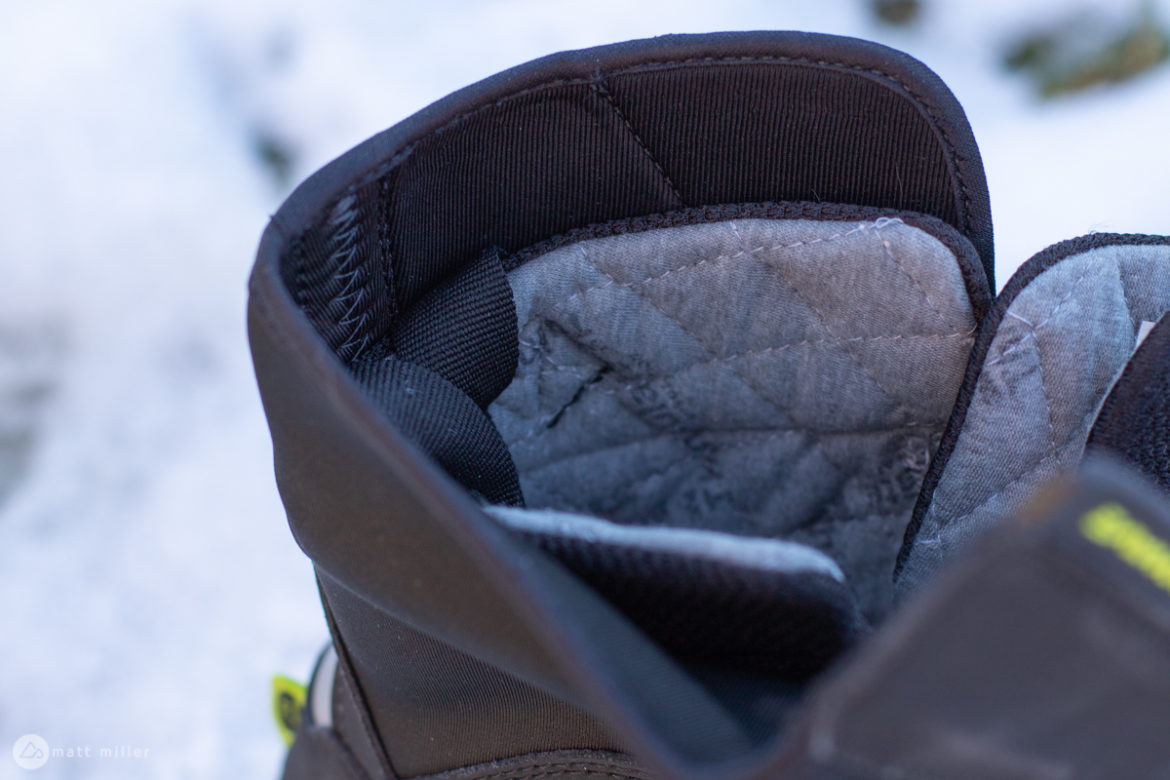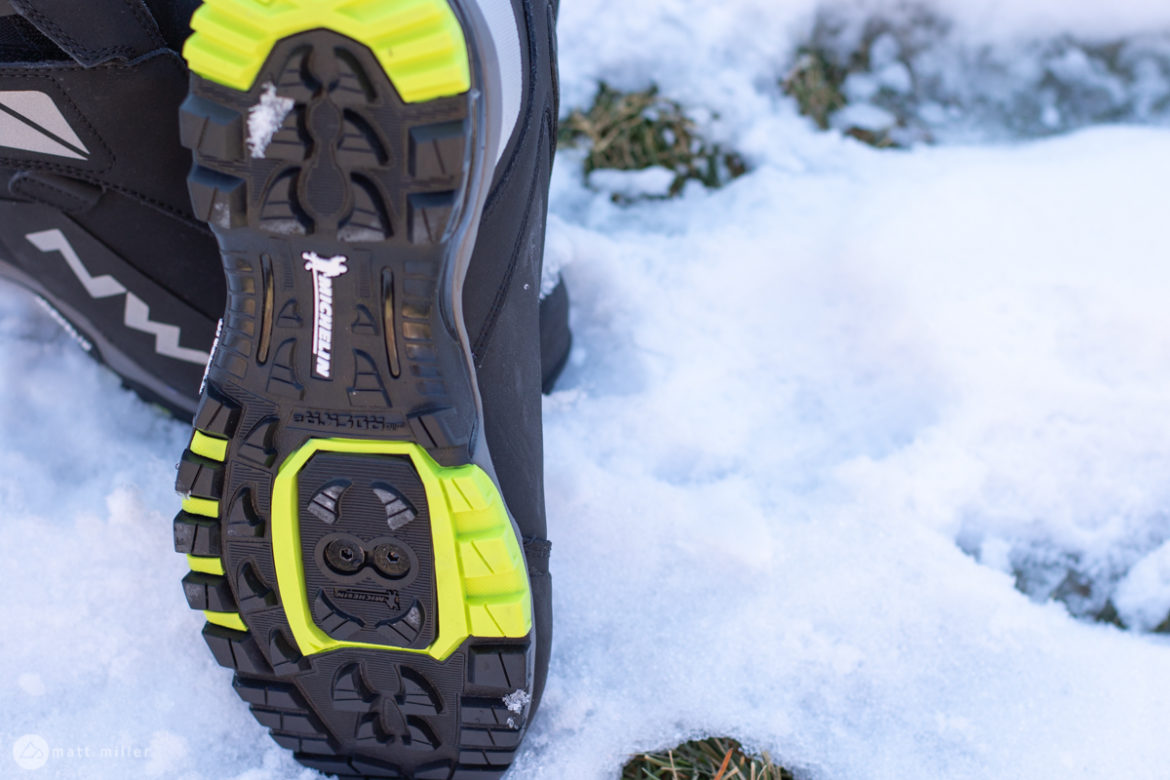I learned an important lesson recently. It involved a well-vented, summer shoe on a long ride in sub-40-degree temperatures, with a low sun and wind from riding, and well, wind.
By the time I got home it felt like my toes were going to fall off and I realized, a little late, it’s important to wear the correct shoe for the correct season, even if it’s not wet and grimy out.
This is where a shoe like the Northwave Himalaya comes in, and if it isn’t obvious by the name, the Himalaya is made to handle cold conditions anywhere.
Specs
- Michelin two-compound sole
- Leather, water-repellent upper
- Thinsulate 400g lining
- Weather-proof pull strap enclosure
- Reinforced rubber heel
- Gaiter attachment on toe
- Weight: 1,270g per pair (with Shimano cleats)
- MSRP: $280 USD
Compare prices for Northwave Himalaya
About the boot
The Himalaya starts at the bottom with a Michelin rubber, two-compound sole for grip. Above that in the foot bed is four layers of aluminum and fleece to reflect and keep heat around the rider’s toes, and a Thinsulate layer wraps around the inside of the ankle.
There’s a gaiter attachment on the top of the foot, toward the toe, for extra wet weather protection.
The Himalaya are clipless-compatible and can be used with a standard two-bolt cleat, or riders can choose to leave the sole insert on for more claws and flat pedal use.
The “claw” design down the center of the sole is said to provide extra traction, along with the extra tread around the edge of the sole.
Lastly the Speed Lace 2 lacing system is meant to quickly cinch down the laces and keep them there without loosening.
On the trail

I’ll admit that I wasn’t too excited to test out these winter boots. I thought they would feel blocky and that I’d lose some agility. I thought they’d take a little bit of fun out of my riding experience, but mostly I hesitated because it meant that I had to go out and ride in the cold. I’ll also admit that I’ve grown a bit soft from working at a cozy desk.
But, product keeps coming in and reviews have to go out, and wearing a boot like the Himalaya means that I can get out more, and have a little bit of fun in the process during the cold season.
At over 1,200g a pair, they are of course heavier than my summer riding shoes, but once I laced them up, I didn’t really notice and I think that speaks to the fit. The sole and footbed wrap around the foot so that the weight is centered and doesn’t feel wonky. The Himalaya shoes don’t feel like weighty, clunky work boots; they feel like confident, warm, and capable mountain bike boots.
The lace system works like a snowboard boot. Pull the straps tight and slide the locking mechanism down. The pull strap itself stays nice and neat under the velcro ankle enclosure. Although the Himalaya are more shoe than a typical mountain bike pair, they are just as convenient to put on and take off.
The sole is quite stiff, which gives the rider a bit more power transfer when pushing tires through muck and snow. The stiff sole isn’t the best for hike-a-biking, but the tread does dig deep.
I used a set of Shimano cleats on the Himalaya, and they worked just fine. Neither the tread nor the width of the boot interfered with clipping in or out.
But, most importantly, my feet stayed warm and dry in the Himalaya. Along with some other cold weather gear, I’ve been getting out once the sun drops for night rides, sometimes with a lot of wind, and sometimes on a still night.
The temperatures have been around 30-degrees on my rides and my toes have been toasty in these boots. With a nice set of wool socks, I’d trust them in far colder temperatures, although Northwave doesn’t have a specific cold weather temperature rating for them.
Conclusion
The Himalaya are a pricy boot, but they are tasked with an important job – keeping riders’ toes warm and plump, instead of cold and stiff. They are comfortable, easy to use, and will probably last several seasons. For those looking for a cold weather mountain bike shoe, the Northwaves are an easy pick.
Thanks to Northwave for providing these shoes for review.


























5 Comments
Dec 19, 2018
Dec 6, 2018
It's cool to see some winter boots that will work with both flats and clipless.
The speed-lace system seems like a smart way to go. Untying knots with frozen fingers is never fun.
Dec 6, 2018
Dec 13, 2018
Dec 13, 2018